How to treat battens in the bath?
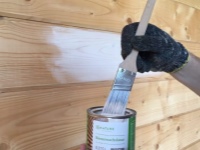
Every owner of his own house or cottage, who decided to build a sauna or bathhouse on his property, probably asks himself the question of how to treat the battens in the interior rooms. At the same time, it should be understood that the paneling is made of a variety of materials (pine, lime, beech) - each of them has its own technical and operational features. These differences should be taken into account when choosing the optimal protective coating.
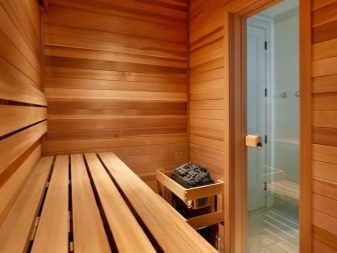
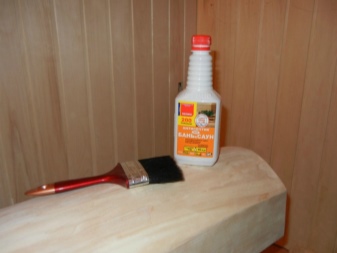
Does it need to be treated?
In any sauna complex there are two types of rooms.
- Entrance hall, checkroom, and washing room are rooms with a stable temperature and low level of humidity. They are covered with cladding made of wood, metal or plastic.
- In the steam room is high humidity, as well as significant temperature fluctuations - here are mostly in demand wooden linings.
The advantages of this material include:
- low thermal conductivity;
- durability;
- resistance to aggressive environments;
- practicality;
- aesthetic appearance.
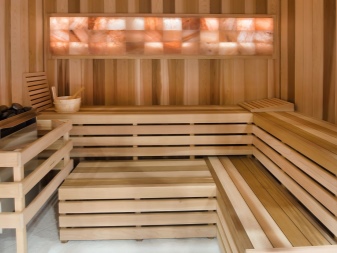
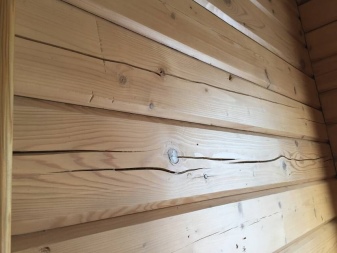
In the process of use, linings usually lose their original characteristics. Over time, the wood begins to darken, the surface becomes worn and rough, and in wet rooms in its fibers begin the process of rotting. There are no less problems in dry rooms - the material dries out, which leads to its cracking and destruction. A decrease in performance characteristics at least in one parameter leads to the need for complete or partial replacement of the material. In order to avoid repair and restore the original performance or at least come close to it, batten is impregnated with special compositions.
The question of whether it is necessary to treat battens immediately after the construction of the bath and repair of bath premises, does not have an unambiguous answer. Some believe that it is necessary to do it necessarily, others believe that such measures should be selective, while others argue that the use of impregnation does not make any sense.
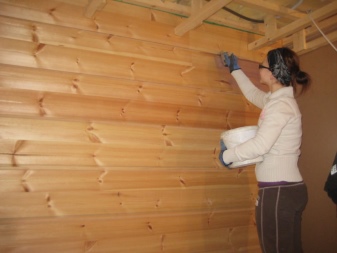
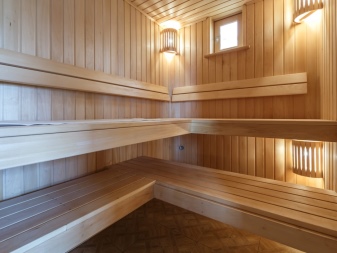
In favor of the treatment is the peculiarity of impregnation to prolong the life of wooden products, as the coating with special preparations increases the durability of wood. In addition, the deep penetration of specialized treatment solutions effectively protects the structure of the material against fungus, mold and other pathogenic microflora. The treatment is also decorative in nature, since the filling of the surface pores with the solution effectively emphasizes the unique texture of the wood pattern - it becomes brighter and richer, and as a result the look of the covering becomes stylish and distinctive.
Advocates of the categorical rejection of the treatment of wood planks argue their position by the presence in the impregnation of dangerous chemical components. They argue that any industrial products necessarily contain toxic substances, which, under conditions of elevated temperatures, get into the surrounding space and settle on the surface of bathing facilities - a person, inhaling moist air, exhales and harmful fumes. Equally dangerous is the reaction of the skin with the impregnated surface, often aggressive components lead to allergic reactions and chemical burns.
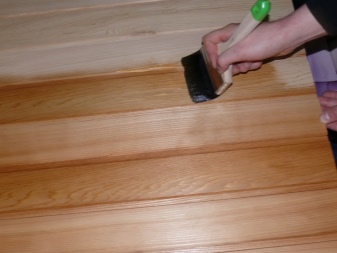
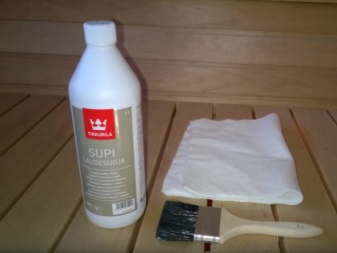
Adherents of partial use of all compositions recommend Pay attention to the peculiarities of the composition of the solutions used and the technical parameters of the room. For example, in the recreation area or pre-bath is usually a low stable temperature and moderate humidity - in such rooms, you can impregnate the wood, as the impact of chemicals will be minimal. But it is not recommended to treat the sauna and steam room, as a preventive measure, it is advised to resort to cleaning the rooms immediately after use and regular drying.
Coat wooden battens with protective impregnation or not - it's up to each homeowner. In any case it is obvious that The best way to do this is to use products of plant origin.The more modern industry offers a lot of solutions that are absolutely safe for both people and the environment.
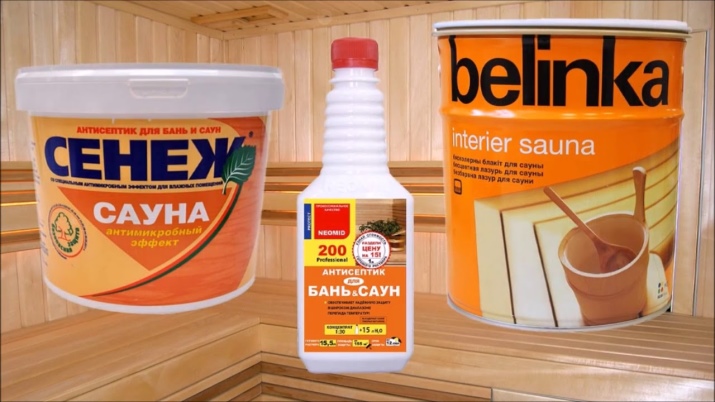
Overview of remedies
All products for the treatment of the surface of battens in the bath is conditionally divided into two groups:
- designed for surfaces that do not come into contact with the skin - these are walls, as well as the ceiling;
- Used to cover surfaces in direct contact with the skin - these are the shelves in the steam room and in the sink.
Products for treating walls with ceilings form a protective thin film on the treated surface, when in contact with the skin is a high risk of burns and allergic reactions. Compounds designed for maintenance procedures for sauna or steam room surfaces have the property of penetrating deep into the fibers of the material, their chemical elements do not come into contact with the skin and do not cause skin damage.
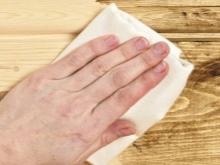
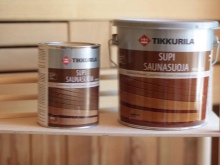
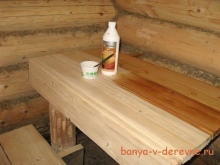
For impregnation
These days, impregnation is considered the easiest and most affordable means to give wood dirt- and water-repellent characteristics. Most paint companies offer ready-to-use formulations that can be purchased at any hardware store. Typically, the range of compositions for baths and saunas are represented by waxes, waxes, and solid and liquid oils, all of which are suitable for impregnation of battens in the bath rooms.
If the bath owner is able to purchase purified linse oil, as well as wax and some other ingredients - you can make your own hands impregnation, which by its characteristics is not inferior to the factory. You can also use rapeseed oil, linseed oil and any other natural oil derived from plants, as well as paraffin oil for self-production of protective compositions.
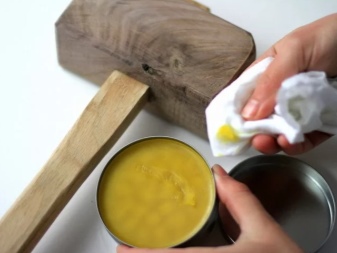
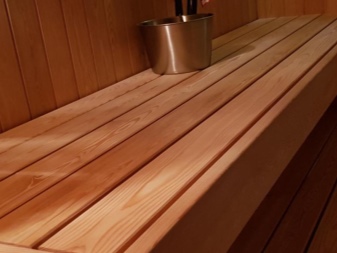
Pay attention to the fact that some unscrupulous manufacturers in order to increase sales of their products use not quite correct marketing ploy - releasing water-based acrylic varnish under the guise of impregnation. Such a compound can be taken only for exterior finish bathing, as well as woodworking in rooms with low temperature, for example, in the hallway. In spaces where there is high humidity and large temperature fluctuations, you can only use oil-based solutions.
For painting
All categories of paint products offered for baths can be divided conditionally into those that allow you to paint surfaces inside the room, as well as for external coatings. This is an important distinction, because inside the room is kept more or less stable microclimate, which is almost not subject to external influences, while at the same time it has basic requirements - the absolute harmlessness to humans. On the outside and the batten is affected by frost, heat, rain, as well as snow and ultraviolet radiation.
That is why the protective coating should be as strong as possible, it requires quite aggressive chemical compositions.
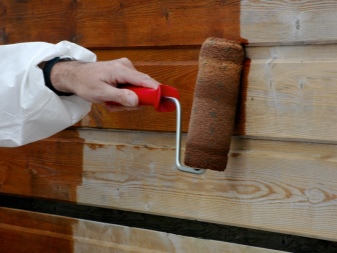

Their use is justified, because all the dangerous vapors from the outside will simply disperse into space. That is why it is very important to carefully read the instructions to the purchased preparation and not to use inside productsDo not use products for exteriors and do not use products for interiors outdoors. In the first case, you will cause serious damage to your health, and in the second case, you will simply throw money down the drain.
Water-based varnishes and paints are a good solution for indoor painting. They have many advantages - it is weak odor, which does not cause dizziness, as well as nausea and skin irritation, which often occurs when in contact with solutions based on organic components. In stores, you can find special enamels, paints and varnishes designed to cover walls with ceilings, even in saunas.
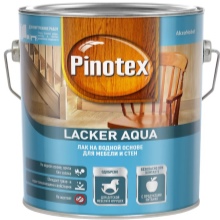
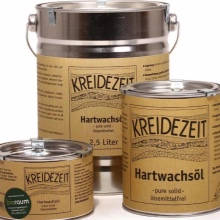
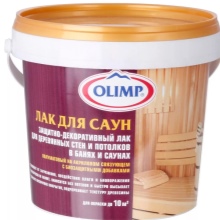
Depending on your aesthetic preferences, you can use either varnishes or water-based paints. Chemically, both are acrylates that are capable of dissolving with water. However, varnishes give a transparent coating - and thus allow you to see the texture and pattern of the wood. Paints, on the other hand, are more opaque, even if they are applied to the walls in the thinnest layer, the most you can do is notice the textural relief.
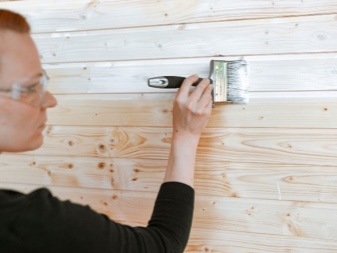
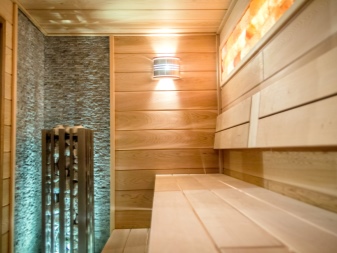
It happens that the appearance of untreated wooden battens over time ceases to please its owners. As we have already mentioned, the wood tends to darken over time in constant contact with water, in addition, it is also affected by soot, it is almost "hard" to get into the wood fibers, especially badly spoiled look of coniferous and lime panels.
But we should not hurry and carry out major repairs, changing the clapboard completely - you can try to cope with this problem. Of course, this will not be easy, since it is much more difficult to clean the soot from the batten than it may seem at first glance.
Trying to scrub with a soapy solution and a regular brush will not clean it. There are only two proven ways to remove soot - chemical as well as mechanical. With the mechanical method everything is clear - the dirt from the surface should be scraped off. The chemical method takes much less time and requires no physical effort on the part of the owner of the room. In any store you can buy ready-made compositions, which are produced specifically to remove soot and soot from the surface of wood.
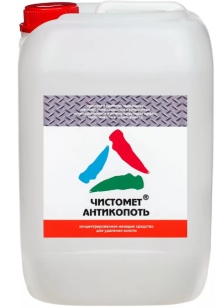
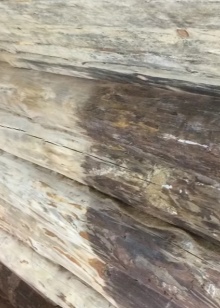
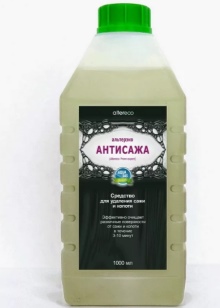
Popular Brands
Any protective compositions designed to cover benches, shelves and other surfaces in the bath must be environmentally friendly and safe for the health of children and adults. That is why you should buy only products from well-known manufacturers with a good reputation on the market. Tikkurila Supi Laudesuoja paraffin oil has received the most positive reviews. It is used for applying both previously treated and untreated surfaces. The degree of penetration of the oil directly depends on the characteristics of the wood.
Natural Wax Protective Compound Supi Saunavaha It gives the effect of deep penetration into the wood fibers, while on their surfaces is formed a strong water- and dirt-repellent film, which reliably protects the batten from the blue, changes in color and the appearance of rot.
We draw special attention to the fact that the composition is not suitable for working with previously treated wood.
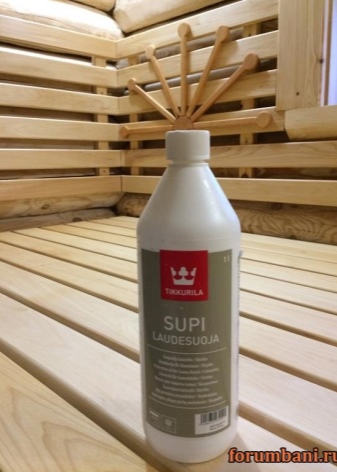
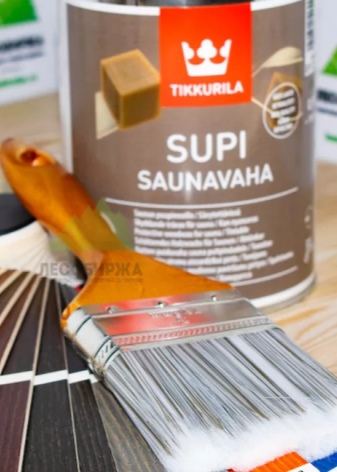
Belinka natural paraffin oil of Sauna Paraffin series gives any wood surface a silky shine and provides it with increased thermal resistance. In addition, the product is colorless and odorless, applied in one or two layers with a brush or sponge and dries in one day.
Among Russian products the following ones are in the greatest demand Acrylic antiseptic Neomid 200. This composition is characterized by an increased degree of protection of wood fibers from rotting, the treatment can even stop the destructive processes that have begun. In addition, the impregnation fully preserves the natural texture of wood and its natural hue.
Oil for baths and saunas brand Neomid is recommended for the protection of woodwork against rotting. It creates an effective barrier against the growth of mould and mildew, has no irritating effect and enhances the decorative appearance of wood.
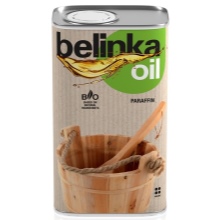

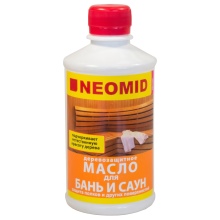
Read more about the wood preservatives below.




